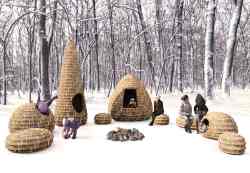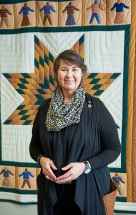Sign of the season: new warming huts open at The Forks
Read this article for free:
or
Already have an account? Log in here »
To continue reading, please subscribe:
Monthly Digital Subscription
$0 for the first 4 weeks*
- Enjoy unlimited reading on winnipegfreepress.com
- Read the E-Edition, our digital replica newspaper
- Access News Break, our award-winning app
- Play interactive puzzles
*No charge for 4 weeks then price increases to the regular rate of $19.00 plus GST every four weeks. Offer available to new and qualified returning subscribers only. Cancel any time.
Monthly Digital Subscription
$4.75/week*
- Enjoy unlimited reading on winnipegfreepress.com
- Read the E-Edition, our digital replica newspaper
- Access News Break, our award-winning app
- Play interactive puzzles
*Billed as $19 plus GST every four weeks. Cancel any time.
To continue reading, please subscribe:
Add Free Press access to your Brandon Sun subscription for only an additional
$1 for the first 4 weeks*
*Your next subscription payment will increase by $1.00 and you will be charged $16.99 plus GST for four weeks. After four weeks, your payment will increase to $23.99 plus GST every four weeks.
Read unlimited articles for free today:
or
Already have an account? Log in here »
Hey there, time traveller!
This article was published 24/01/2020 (2145 days ago), so information in it may no longer be current.
Ironically, Adrian Steckeweh and Masato Ashida are a little chilly.
The Tokyo-based architects were walking around The Forks on Friday morning, standing in front of Forest Village, their firm’s winning entry into the site’s annual warming hut competition.
“It’s very nice here, but it’s also very cold,” said Steckeweh, wearing a metallic-looking parka to ward off the -6 C (-10 C with wind-chill) weather. The duo arrived in Winnipeg earlier in the week to build their huts, an assemblage of woven basket-like structures inspired by a Japanese storage system for daikon radish.
Forest Village is one of five huts chosen this year out of 200 entries from around the world. Other winners include a structure composed entirely of shovels (designed by a Calgary collective), and a group of beast-like huts its designer calls the Droombok.
Local indie band Royal Canoe was also enlisted to develop a concept for a warming hut, but theirs likely won’t provide much warmth: it’s a stage, crafted entirely from blocks of ice drawn from Fort Whyte, that will be the site of a concert Jan. 31.
This year, unlike years past, the warming huts won’t be placed on the river, as the skating trail will not open this season due to unfavourable ice conditions.
Paul Jordan, The Forks Renewal Corporation chief executive officer, said that might not be such a bad thing: now, every hut is easily accessible and clustered around the historical site’s central skating rink. One, designed by University of Manitoba architecture students, is actually located inside; other huts from previous years will be scattered nearby as well.
The competition has been going on for nearly a decade.
Noel Picaper, the Strasbourg, France, native who designed the Droombok, was also getting acclimated to the (fairly mild) weather. His design’s name is drawn from the same etymology as rhebok and springbok antelopes, and roughly means “dream goat.”
For the trip to Winnipeg, he bought a new winter coat. By the looks of his shivers Friday, he could use another layer.
Nearby, standing amid 20 tonnes of ice, Norwegian architect Luca Roncoroni looked unfazed by the cold.
Roncoroni is one of the world’s most renowned ice sculptors, and serves as the creative director of the Swedish Ice Hotel. He’s designed ice creations in Norway, France, and Finland, and has been to Winnipeg eight times before to participate in the warming hut contest. In other words, he knew what he was getting himself into.
“80 per cent of my work is in ice,” he said.
Using a Chinese-made ice chisel, Roncoroni — who’s collaborating on Royal Canoe’s ice stage concept with local outfit Sputnik Architecture — was busy chipping away. He and a crew of 12 had been working on the project since Tuesday, and it will take a full week more for the stage to be done.
In total, 25 tonnes of ice will be used, Roncoroni said. Nearby, Bobcat loaders carried 500-kilogram blocks of ice, placing them gently on two-by-fours.
In the past, Roncoroni used Red River ice, which he said is a bit clearer and has a turquoise hue. This year, the lack of normal freeze meant his crew had to excavate ice elsewhere. The Fort Whyte ice is cloudier, but just as forgiving, he said.
Standing in front of their creation, Ashida and Steckeweh snapped pictures while explaining to reporters their inspiration. A little boy walked into one of the Forest Village huts, and Steckeweh stopped, mid-sentence.
“Can you please capture this?” he said to Ashida, who promptly pointed his lens.
“That’s just the cutest.”
ben.waldman@freepress.mb.ca

Ben Waldman covers a little bit of everything for the Free Press.
Our newsroom depends on a growing audience of readers to power our journalism. If you are not a paid reader, please consider becoming a subscriber.
Our newsroom depends on its audience of readers to power our journalism. Thank you for your support.
History
Updated on Friday, January 24, 2020 9:43 PM CST: Fixes misspelled name in photo caption.




![S[Hovel], designed by a Calgary collective, is one of the 2020 winners of the 10th Warming Huts art + architectural competition at the Forks. This structure is composed entirely of shovels. (Supplied)](https://dev.winnipegfreepress.com/wp-content/uploads/sites/2/2022/06/S[HOVEL]+I.jpg?w=250)







